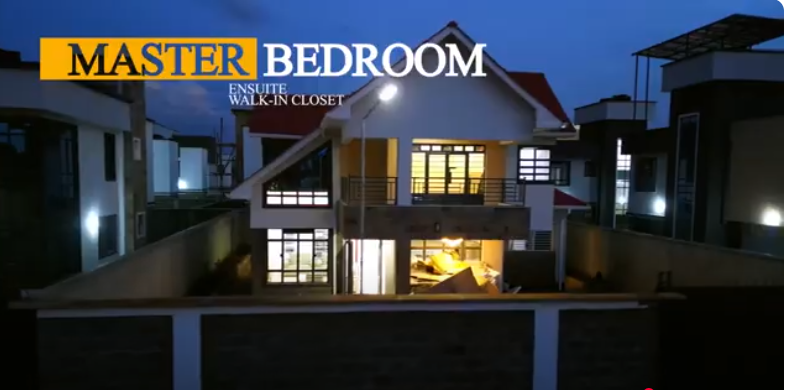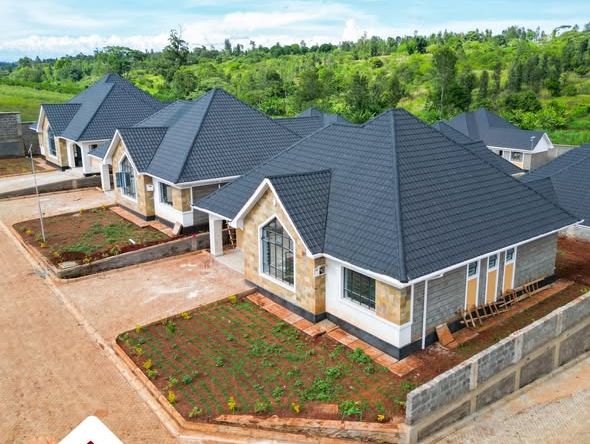Kenya’s luxury housing market is showing remarkable resilience in 2025, with new industry data revealing that affluent buyers continue to sustain activity in Nairobi’s most exclusive neighbourhoods. Despite a sluggish national economy and widespread pressure on household budgets, demand for high-end homes remains strong — signalling renewed investor confidence in the upper tier of the property sector.
Fresh figures from the HassConsult House Price Index (Q3 2025) show that overall property prices rose 8.2 per cent over the past year, with a 1.1 per cent increase recorded during the latest quarter. The strongest gains were posted in detached homes within secure, master-planned estates — a segment that continues to attract cash-rich buyers seeking privacy, space and long-term capital preservation.
Runda and Muthaiga Lead the Luxury Charge
Runda was the quarter’s breakout performer, recording a 15.3 per cent surge in annual sale prices. Real estate agents say the growth reflects intense interest from well-capitalised buyers — including diaspora investors and high-net-worth individuals — who are prioritising larger compounds, better security, and stable long-term value.
Close behind was Muthaiga, up 13.9 per cent, followed by Ridgeways at 12.9 per cent, further cementing the dominance of Nairobi’s traditional blue-chip suburbs.
Other leafy neighbourhoods such as Loresho, Karen, and Lavington also posted strong gains, with annual growth rates ranging between 7 and 11 per cent. Collectively, these zones illustrate a broader trend: buyers at the top end of the market are absorbing price increases more comfortably than the middle class, thanks to lower reliance on mortgages and stronger liquidity positions.
Read Also: Nairobi’s Demolition Drive and the Affordable Housing Controversy
Former Hotspots Cool as Diplomatic and Corporate Demand Shrinks
While most luxury districts thrived, a few formerly high-demand areas registered declines. Gigiri saw prices fall 6.1 per cent, and Westlands dipped by nearly 2 per cent.
Analysts attribute the drop to a slowdown in diplomatic and corporate housing demand. Several international organisations, NGOs and multinational firms have scaled back their Nairobi operations, contributing to reduced competition for high-end rentals and sales in these neighbourhoods.
This shift reflects a deeper structural trend: the luxury segment is increasingly being driven by local and diaspora cash buyers, rather than expatriate tenants or corporate leases.
Mixed Fortunes in the Rental Market
The rental market delivered a mixed performance across Nairobi. Spring Valley posted a 7.4 per cent rent increase, while Lang’ata rose 7.2 per cent, driven largely by tenants seeking more affordable housing options that still offer proximity to the city centre.
Lavington also saw moderate rental gains. In contrast, the premium rental segment continued to soften. Muthaiga rents dropped 8.1 per cent, while Nyari Estate declined 5.3 per cent, as the exit of expatriates and corporate tenants left many luxury homes vacant or forced landlords to reduce rates to attract Kenyan renters.
This rebalancing of rental demand is reshaping Nairobi’s high-end property market, pushing developers and landlords to rethink pricing, amenities, and target audiences.
Market Still Cash-Driven as Middle Class Remains Under Pressure

Commenting on the findings, Sakina Hassanali, Co-CEO and Creative Director at HassConsult, noted the uneven nature of the sector.
“The market remains supported by cash-driven demand, even as middle-class incomes stay under pressure,” she said.
High interest rates and inflation continue to weigh heavily on mortgage-backed buyers, especially in the middle-income bracket. This divide is widening the gap between Nairobi’s stable high-end estates and the more fragile mid-market.
Satellite Towns Emerge as the Next Growth Frontier
Away from the traditional luxury core, several satellite towns are heating up as alternative investment hubs. Athi River, Ruaka, and Kitengela are attracting middle-income buyers priced out of Nairobi’s central suburbs, offering lower entry points, improving infrastructure, and better connectivity via roads and commuter routes.
In the latest quarter, Athi River recorded a 4.3 per cent rise in sale prices, continuing a steady upward trajectory that reflects a shift toward suburban living and mixed-use developments outside the capital.
These emerging nodes are increasingly appealing to investors seeking rental yields, speculative land value, and access to Nairobi’s economic zones without the cost burden of established suburbs.
Read Also: Beyond The Block: The Hustle Behind The Scene At Willstone Homes
2025 Outlook: Resilience at the Top, Caution in the Middle
As 2025 progresses, Kenya’s property market is reaffirming a familiar pattern:
- The luxury segment remains resilient, buoyed by cash buyers and long-term investment mindsets.
- Detached homes in secure, well-serviced neighbourhoods continue to outperform, both in price appreciation and buyer interest.
- Middle-income markets remain the most vulnerable, strained by high borrowing costs and inflationary pressure.
Analysts expect moderate, stable growth to continue into early 2026, especially for properties in stable, low-density estates and counties with ongoing infrastructure expansion. The country’s underlying demand — driven by urbanisation, security-conscious buyers, and Kenya’s growing affluent class — continues to shape new housing trends even amid economic uncertainty.




